Fleurs du Mal Magazine


Or see the index
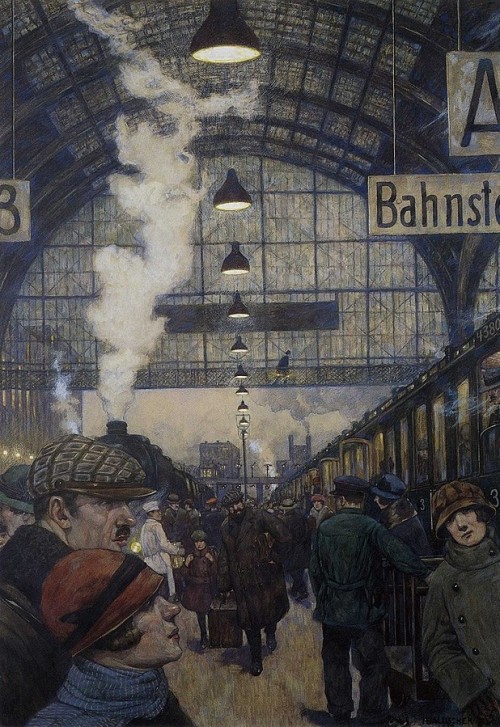
Bahnhofshalle
Bij het gelijknamige schilderij uit 1929 van Hans Baluschek
Ze meende dat ze bij elkaar hoorden maar in
het voorbijgaan vangt ze op hoe zij nog aan hem
vraagt van waar hij komt. “Een ’oekske”, zegt hij.
“Een donker ’oekske.” Zwijgend vreest hij dan
weer voor eeuwig de pantomime van krijgers
die alleen in tientallen rekenen, tellend doden.
Bert Bevers
Bahnhofshalle
•fleursdumal.nl magazine
More in: Archive A-B, Archive A-B, Bevers, Bert, FDM in Berlin

Aubade chantée à Laetare l’an passé
C’est le printemps viens-t’en Pâquette
Te promener au bois joli
Les poules dans la cour caquètent
L’aube au ciel fait de roses plis
L’amour chemine à ta conquête
Mars et Vénus sont revenus
Ils s’embrassent à bouches folles
Devant des sites ingénus
Où sous les roses qui feuillolent
De beaux dieux roses dansent nus
Viens ma tendresse est la régente
De la floraison qui paraît
La nature est belle et touchante
Pan sifflote dans la forêt
Les grenouilles humides chantent
Guillaume Apollinaire
(1880 – 1918)
Poéme: Aubade chantée à Laetare l’an passé
Recueil: Alcools (1913)
• fleursdumal.nl magazine
More in: *Concrete + Visual Poetry A-E, Apollinaire, Guillaume, Archive A-B, Archive A-B, DADA, Dada, Dadaïsme, Guillaume Apollinaire
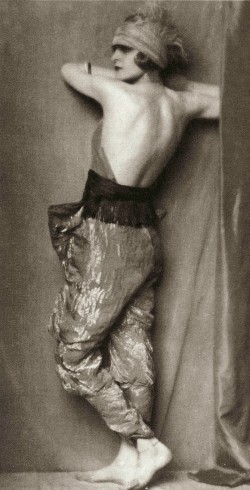
Kokain
Wände
Tisch
Schatten und Katzen
Grüne Augen
Viele Augen
Millionenfache Augen
Das Weib
Nervöses zerflatterndes Begehren
Aufflackerndes Leben
Schwälende Lampe
Tanzender Schatten
Kleiner Schatten
Großer Schatten
Der Schatten
Oh – der Sprung über den Schatten
Er quält dieser Schatten
Er martert dieser Schatten
Er frißt mich dieser Schatten
Was will dieser Schatten
Kokain
Aufschrei
Tiere
Blut
Alkohol
Schmerzen
Viele Schmerzen
Und die Augen
Die Tiere
Die Mäuse
Das Licht
Dieser Schatten
Dieser schrecklich große schwarze Schatten.
Anita Berber
(1899-1928)
Kokain
Anita Berber (1899 – 1928) was a German dancer, actress, and poet. She lived during the time of the Weimar Republic in Berlin.
• fleursdumal.nl magazine
More in: #Editors Choice Archiv, Anita Berber, Anita Berber, Archive A-B, Archive A-B, Berber, Anita, DANCE & PERFORMANCE, FDM in Berlin, Opium-Eaters
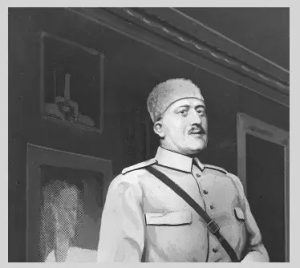
Annie
Sur la côte du Texas
Entre Mobile et Galveston il y a
Un grand jardin tout plein de roses
Il contient aussi une villa
Qui est une grande rose
Une femme se promène souvent
Dans le jardin toute seule
Et quand je passe sur la route bordée de tilleuls
Nous nous regardons
Comme cette femme est mennonite
Ses rosiers et ses vêtements n’ont pas de boutons
Il en manque deux à mon veston
La dame et moi suivons presque le même rite
Guillaume Apollinaire
(1880 – 1918)
Poéme: Annie
Recueil: Alcools (1913)
• fleursdumal.nl magazine
More in: Archive A-B, Archive A-B, DADA, Dada, Dadaïsme, Guillaume Apollinaire

1909
La dame avait une robe
En ottoman violine
Et sa tunique brodée d’or
Était composée de deux panneaux
S’attachant sur l’épaule
Les yeux dansants comme des anges
Elle riait elle riait
Elle avait un visage aux couleurs de France
Les yeux bleus les dents blanches et les lèvres très rouges
Elle avait un visage aux couleurs de France
Elle était décolletée en rond
Et coiffée à la Récamier
Avec de beaux bras nus
N’entendra-t-on jamais sonner minuit
La dame en robe d’ottoman violine
Et en tunique brodée d’or
Décolletée en rond
Promenait ses boucles
Son bandeau d’or
Et traînait ses petits souliers à boucles
Elle était si belle
Que tu n’aurais pas osé l’aimer
J’aimais les femmes atroces dans les quartiers énormes
Où naissaient chaque jour quelques êtres nouveaux
Le fer était leur sang la flamme leur cerveau
J’aimais j’aimais le peuple habile des machines
Le luxe et la beauté ne sont que son écume
Cette femme était si belle
Qu’elle me faisait peur
Guillaume Apollinaire
(1880 – 1918)
Poéme: 1909
Recueil: Alcools (1913)
• fleursdumal.nl magazine
More in: Apollinaire, Guillaume, Archive A-B, Archive A-B, Dadaïsme, Guillaume Apollinaire, Histoire de France
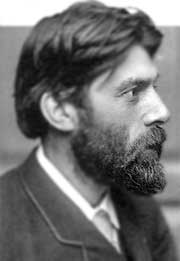
Low Barometer
The south-wind strengthens to a gale,
Across the moon the clouds fly fast,
The house is smitten as with a flail,
The chimney shudders to the blast.
On such a night, when Air has loosed
Its guardian grasp on blood and brain,
Old terrors then of god or ghost
Creep from their caves to life again;
And Reason kens he herits in
A haunted house. Tenants unknown
Assert their squalid lease of sin
With earlier title than his own.
Unbodied presences, the pack’d
Pollution and remorse of Time,
Slipp’d from oblivion reënact
The horrors of unhouseld crime.
Some men would quell the thing with prayer
Whose sightless footsteps pad the floor,
Whose fearful trespass mounts the stair
Or burts the lock’d forbidden door.
Some have seen corpses long interr’d
Escape from hallowing control,
Pale charnel forms—nay ev’n have heard
The shrilling of a troubled soul,
That wanders till the dawn hath cross’d
The dolorous dark, or Earth hath wound
Closer her storm-spredd cloke, and thrust
The baleful phantoms underground.
Robert Bridges
(1844-1930)
Low Barometer
• fleursdumal.nl magazine
More in: Archive A-B, Archive A-B, Bridges, Robert

Het plezier van de liplezer
Hij heeft in schijnbewegingen geen trek,
verduidelijkt weifelen slechts met tegenzin.
Dat je uit de letters van liplezer plezier kunt
halen en dan zelfs nog een l overhoudt. Van
zulke kleine dingen kan hij waarlijk oprecht
genieten. Vreugde is zelden een vergissing.
Bert Bevers
Het plezier van de liplezer
Uit Bedekte termen, Stabilitas loci, Antwerpen, 2023
https://www.amazon.co.uk/Bedekte-termen-gedichten-Bert-Bevers/dp/B0C8QW1G9N
• fleursdumal.nl magazine
More in: Archive A-B, Archive A-B, Bedekte Termen

Model
Ik merk dat wat dieper in de tram een meisje mij
bekijkt en tekent. Ze schrikt wanneer ik knipoog,
alsof onder haar potlood het papier beweegt.
Ik laat haar en denk wanneer ik uitstap ‘Dag
schetsboek met mijn anonieme kop erin! Dag
lijnenzetster die niet weet dat ik dit schrijven zal.’
Bert Bevers
Model
Uit Bedekte termen, Stabilitas loci, Antwerpen, 2023
https://www.amazon.co.uk/Bedekte-termen-gedichten-Bert-Bevers/dp/B0C8QW1G9N
• fleursdumal.nl magazine
More in: #Editors Choice Archiv, Archive A-B, Archive A-B, Bedekte Termen, Bevers, Bert
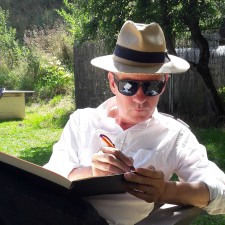
Tristram en Isolde
Tristram moest Isolde minnen,
de blauwe pil dwong hem ertoe.
Koning Mark wilde haar winnen,
op eigen kracht. Hij wist niet hoe.
De nevel drong de huizen binnen.
Haar lichaam deed de deuren toe.
Ze was klaar, zei ze, met minnen.
Ze hees haar rode zeil. Was moe.
Paul Bezembinder
Tristram en Isolde
Gedicht
Paul Bezembinder studeerde theoretische natuurkunde in Nijmegen. In zijn poëzie zoekt hij vooral in klassieke versvormen en thema’s naar de balans tussen serieuze poëzie, pastiche en smartlap. Bij uitgeverij Leeuwenhof (Oostburg) verschenen de bundels Gedichten (2020), Parkzicht (2020) en Duizelingen (2022). Website: www.paulbezembinder.nl.
• fleursdumal.nl magazine
More in: Archive A-B, Archive A-B, Bezembinder, Paul, Tristan & Isolde
In her new collection Who Will Make The Fire, published in association with New River Press, Bellamacina employs metaphors of wind, dawn, trees and fire to explore an interior world.
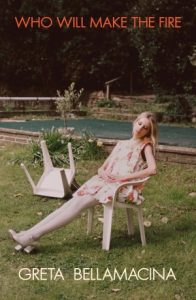 A personal book about love, loss, nature, depression and recovery, the wind in Who Will Make The Fire becomes the biographer of the self; a way to trace this everevolving garden, that must die, again and again, like a wild bird shedding its unimaginable feathers.
A personal book about love, loss, nature, depression and recovery, the wind in Who Will Make The Fire becomes the biographer of the self; a way to trace this everevolving garden, that must die, again and again, like a wild bird shedding its unimaginable feathers.
Who Will Make The Fire questions what it is to really live, to live with stillness and fire; to combat the digital world and to get back to the earth and let the hidden circle of nature find its way back into the self.
‘Dreamlike, with bite. Bellamacina’s work is brutal, floral, blood-soaked and knowing, in the way that nature is both cruel and beautiful.’ ― Florence Welch
Greta Bellamacina published her first collection ‘Kaleidoscope’ in 2011. In 2014 she was short-listed as the Young Poet Laureate of London. In 2015 she edited ‘A Collection of Contemporary British Love Poetry’ a survey of British love poetry from Ted Hughes til now, it features the work of Wendy Cope, Emily Berry, Annie Freud and Sam Riviere. She has been a writer-in-residence at the Chateau Marmont Hotel in LA. and Andy Warhol’s Interview Magazine says Greta, ” is garnering critical acclaim for her way with words and her ability to translate the classic poetic form into the contemporary creative landscape.” Greta’s new collection “Perishing Tame” is a dazzling and frank meditation on motherhood, female identity, ennui and love. Greta and her work have featured in The Guardian, The Times, The Evening Standard, Dazed & Confused, I-D Magazine, Interview Magazine, British Vogue, Elle , Wonderland, and Hunger Magazine. She has performed her poetry on CNN, BBC World News, BBC Radio 4 , BBC London, BBC Radio 2 with Jonathan Ross and BBC Radio 3 on The Verb poetry show.
Greta Bellamacina:
Who Will Make the Fire
Publisher: Cheerio Publishing
Publication Date: 20 Jun. 2024
Language: English
Hardcover
ISBN-10: 1739440595
ISBN-13 978-1739440596
£12.99
• fleursdumal.nl magazine
More in: #Editors Choice Archiv, #Modern Poetry Archive, - Book News, - Bookstores, Archive A-B, Archive A-B, Bellamacina, Greta, Florence Welch
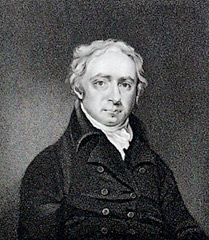
Song of the American Indian
Stranger, stay, nor wish to climb
The heights of yonder hills sublime;
For there strange shapes and spirits dwell,
That oft the murmuring thunders swell,
Of power from the impending steep
To hurl thee headlong to the deep;
But secure with us abide,
By the winding river’s side;
Our gladsome toil, our pleasures share,
And think not of a world of care.
The lonely cayman, where he feeds
Among the green high-bending reeds,
Shall yield thee pastime; thy keen dart
Through his bright scales shall pierce his heart.
Home returning from our toils,
Thou shalt bear the tiger’s spoils;
And we will sing our loudest strain
O’er the forest-tyrant slain!
Sometimes thou shalt pause to hear
The beauteous cardinal sing clear;
Where hoary oaks, by time decayed,
Nod in the deep wood’s pathless glade;
And the sun, with bursting ray,
Quivers on the branches gray.
By the river’s craggy banks,
O’erhung with stately cypress-ranks,
Where the bush-bee hums his song,
Thy trim canoe shall glance along.
To-night at least, in this retreat,
Stranger! rest thy wandering feet;
To-morrow, with unerring bow,
To the deep thickets fearless we will go.
William Lisle Bowles
(1762 – 1850)
Song of the American Indian
• fleursdumal.nl magazine
More in: # Classic Poetry Archive, #Archive Native American Library, Archive A-B, Archive A-B, Cowboys and Indians, Racism, Western Fiction

Houvast
Kennen wij niets meer dan nagebootste
gebarentaal? Soms, soms is de waarheid
moeilijk. Bij een vraag als Spant de boog
de pees, of kromt de pees de boog? is ons
de grens van wetten te vaag. Er is geen
weerstand zonder tekenen aan de wand.
Van verbeelding geven zij misleidende
straling af, als fosforstronken in het woud.
Houvast: de cartografie van het geheugen,
het register van de weemoed. En natuurlijk,
sterk en zacht als gepolijst olijvenhout,
de eeuwigheid. Die eeuwigheid. ‘O’ zegt
de een er voor, en ‘Ach’ de ander….
Bert Bevers
Houvast
Verschenen in de uitgave ter herdenking van Erik Heyman (1960-2010),
Voorspel, Liedekerke/Aalst, 2010
• fleursdumal.nl magazine
More in: Archive A-B, Archive A-B, Bevers, Bert
Thank you for reading Fleurs du Mal - magazine for art & literature